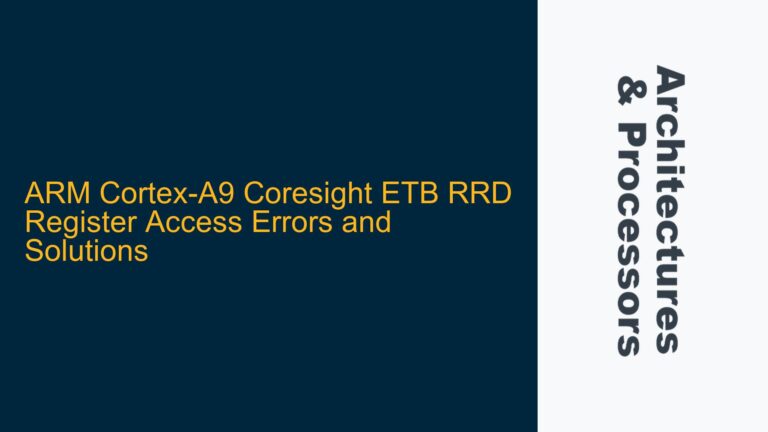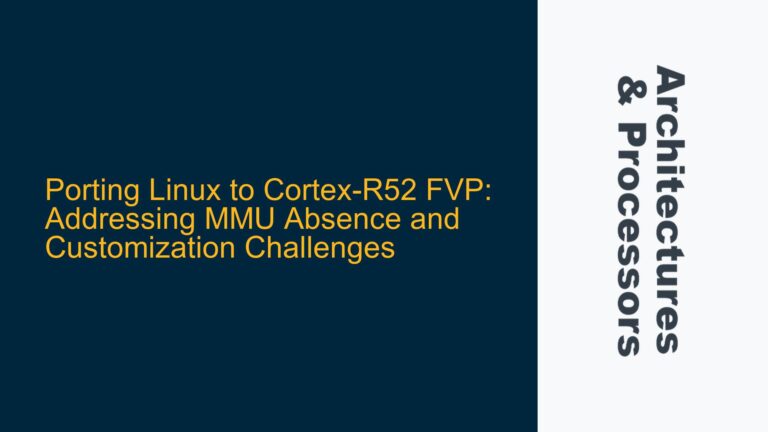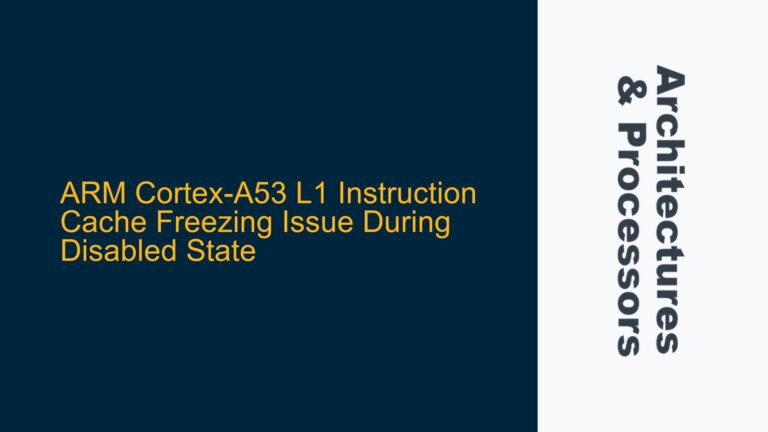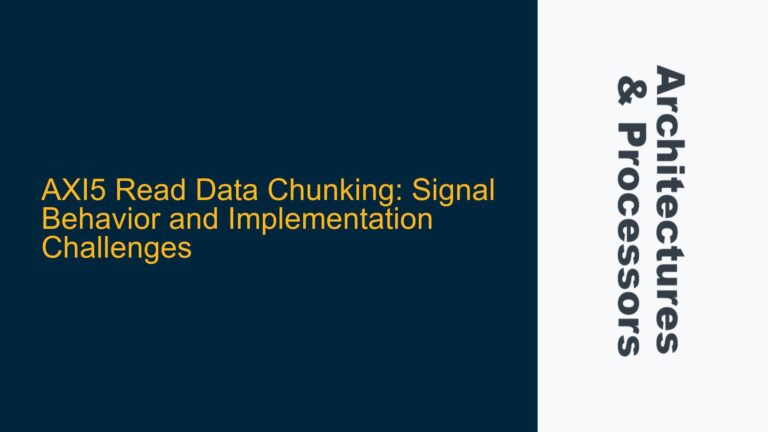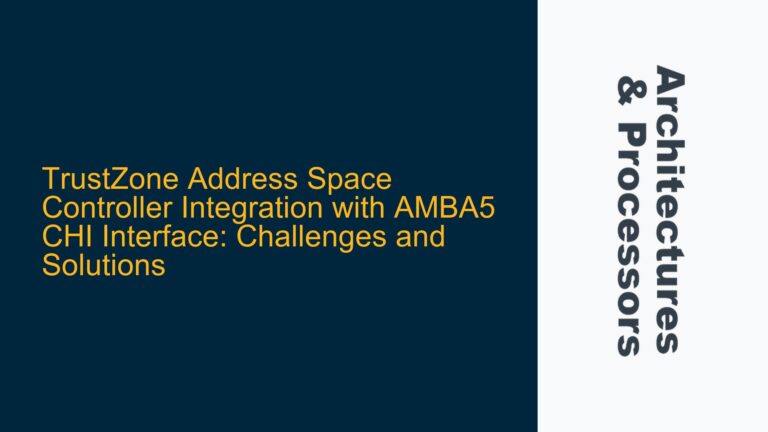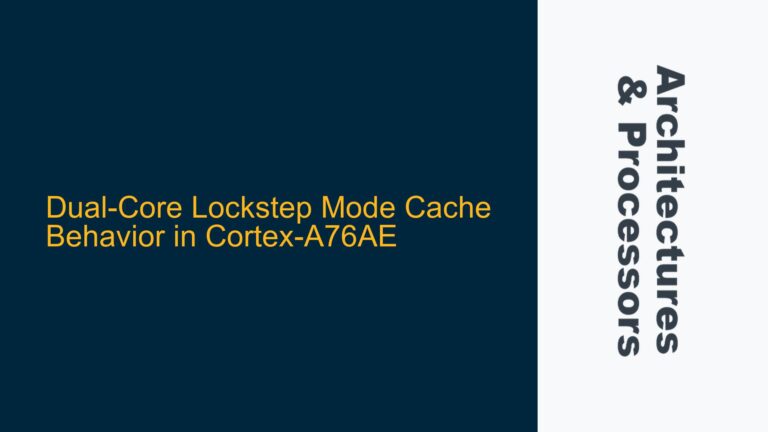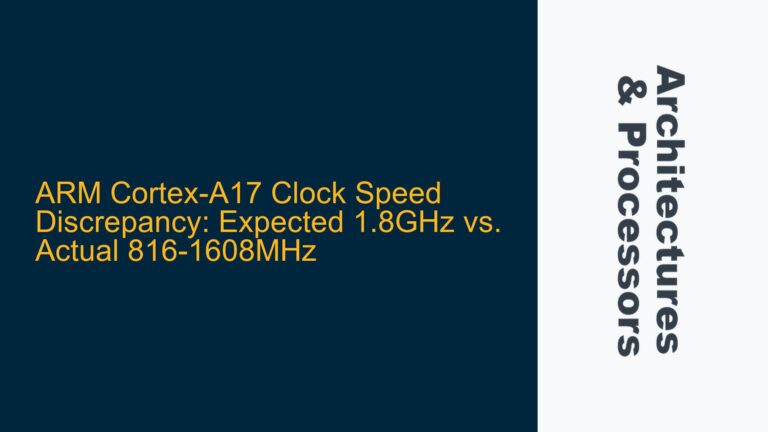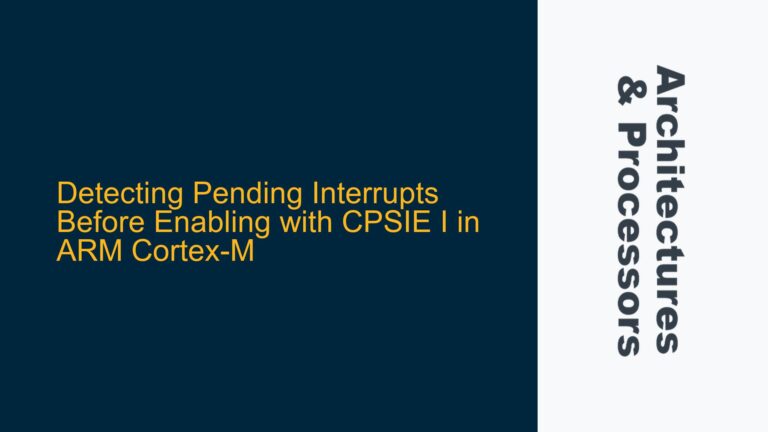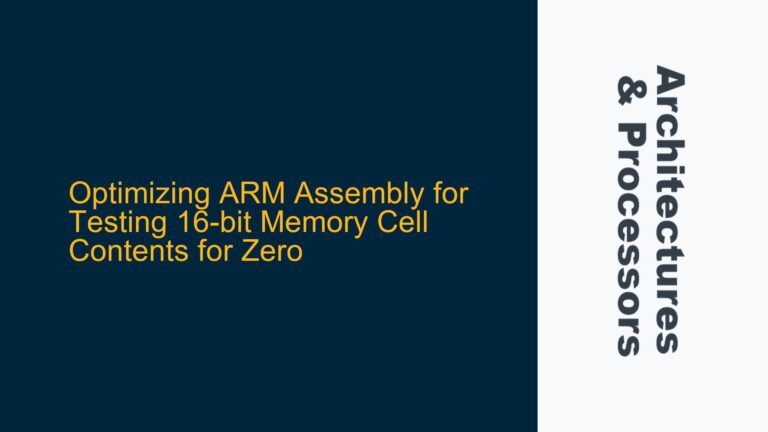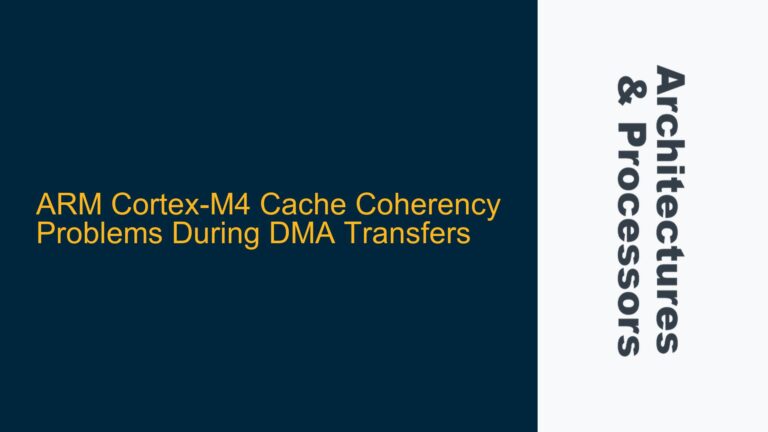ARM Cortex-A9 Coresight ETB RRD Register Access Errors and Solutions
Coresight ETB RRD Register Access Errors During Trace Data Retrieval When working with ARM Cortex-A9 processors and utilizing Coresight Embedded Trace Buffer (ETB) for debugging and tracing, a common issue arises when attempting to read back trace data from the ETB RAM via the RRD (Read Response Data) register. The error message "Memory read error…
